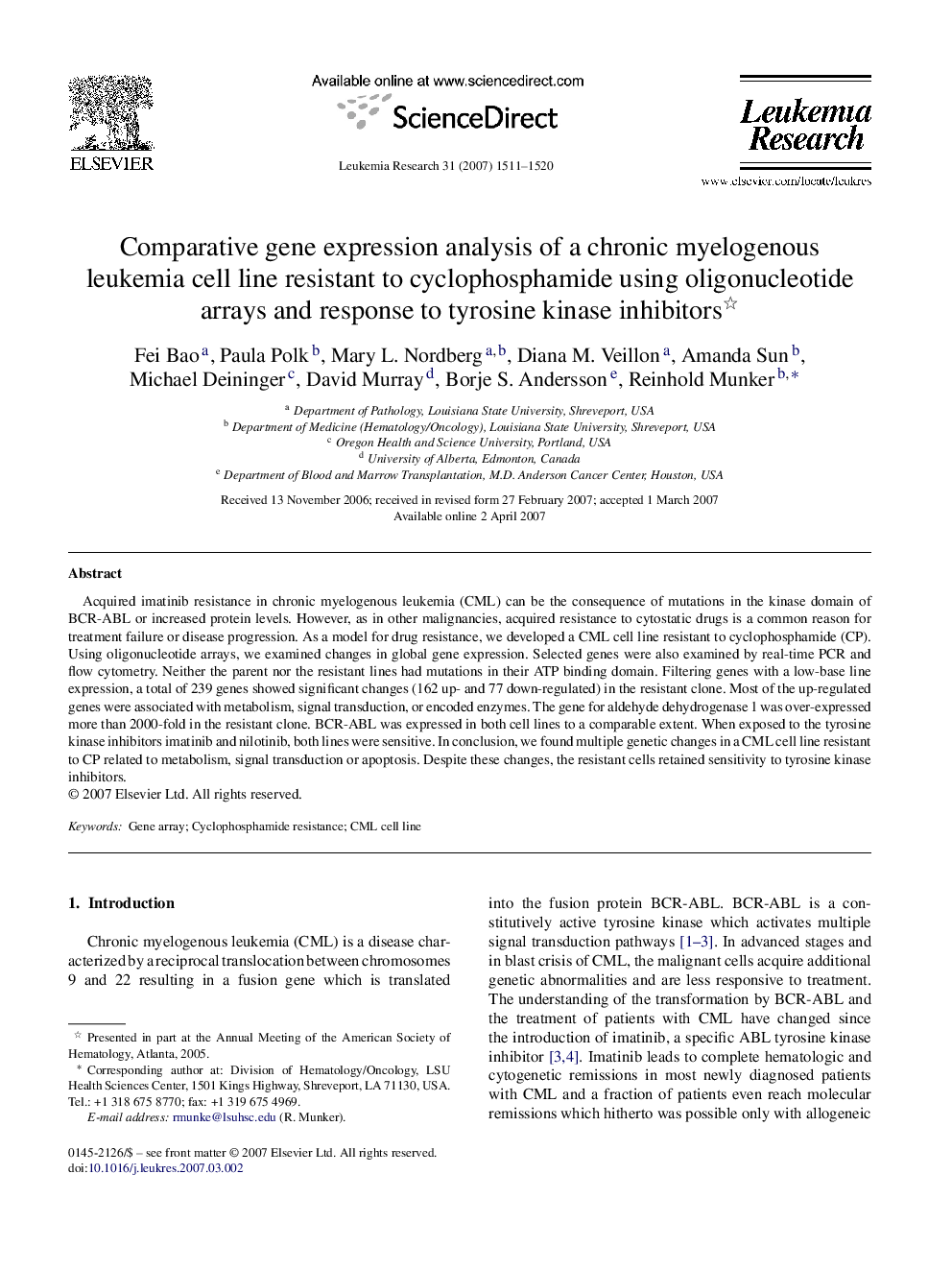| Article ID | Journal | Published Year | Pages | File Type |
|---|---|---|---|---|
| 2139479 | Leukemia Research | 2007 | 10 Pages |
Acquired imatinib resistance in chronic myelogenous leukemia (CML) can be the consequence of mutations in the kinase domain of BCR-ABL or increased protein levels. However, as in other malignancies, acquired resistance to cytostatic drugs is a common reason for treatment failure or disease progression. As a model for drug resistance, we developed a CML cell line resistant to cyclophosphamide (CP). Using oligonucleotide arrays, we examined changes in global gene expression. Selected genes were also examined by real-time PCR and flow cytometry. Neither the parent nor the resistant lines had mutations in their ATP binding domain. Filtering genes with a low-base line expression, a total of 239 genes showed significant changes (162 up- and 77 down-regulated) in the resistant clone. Most of the up-regulated genes were associated with metabolism, signal transduction, or encoded enzymes. The gene for aldehyde dehydrogenase 1 was over-expressed more than 2000-fold in the resistant clone. BCR-ABL was expressed in both cell lines to a comparable extent. When exposed to the tyrosine kinase inhibitors imatinib and nilotinib, both lines were sensitive. In conclusion, we found multiple genetic changes in a CML cell line resistant to CP related to metabolism, signal transduction or apoptosis. Despite these changes, the resistant cells retained sensitivity to tyrosine kinase inhibitors.
